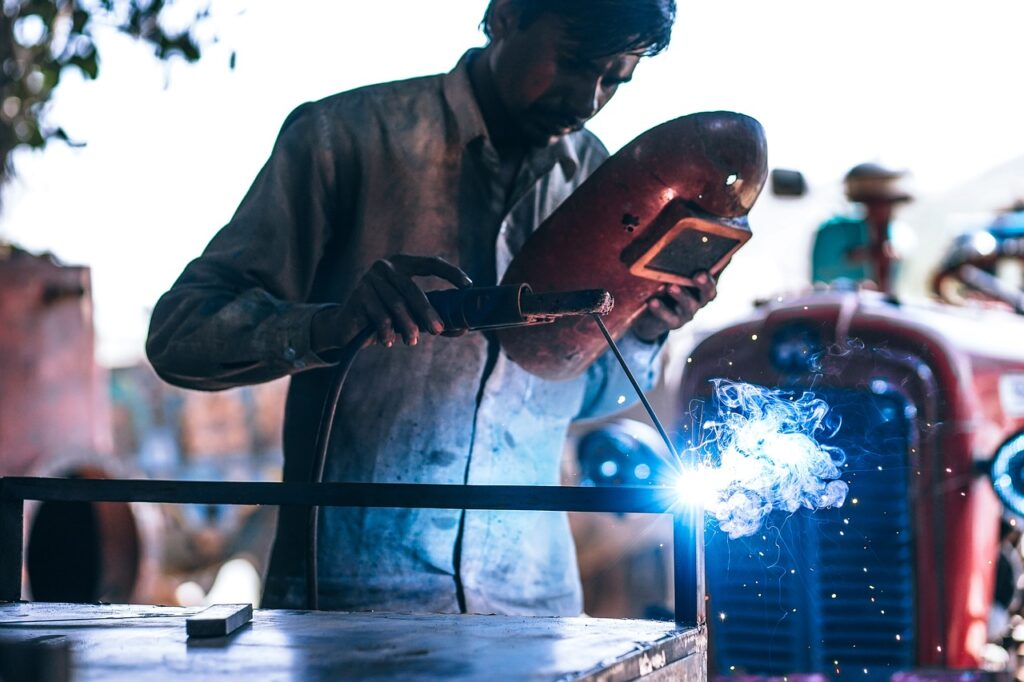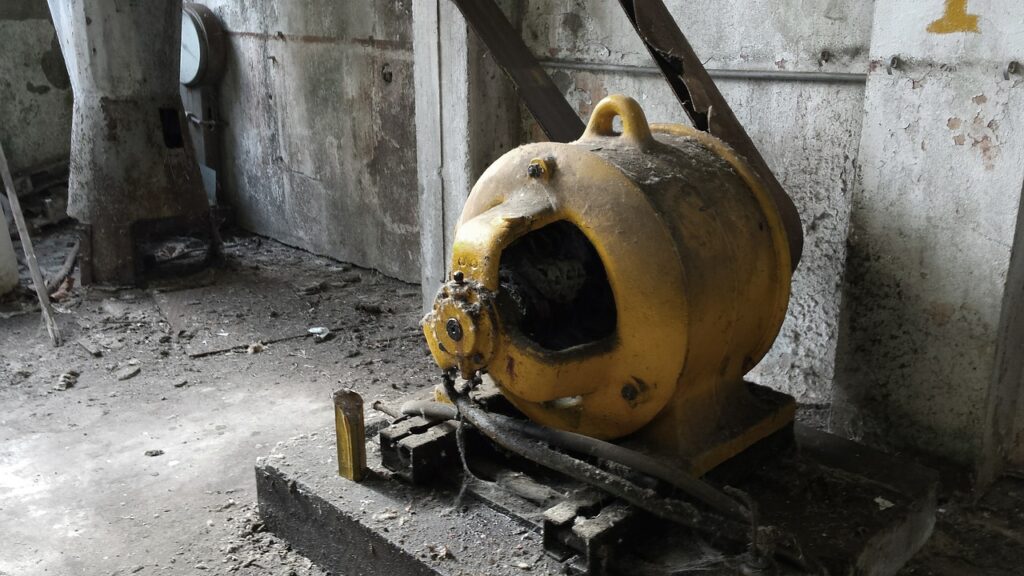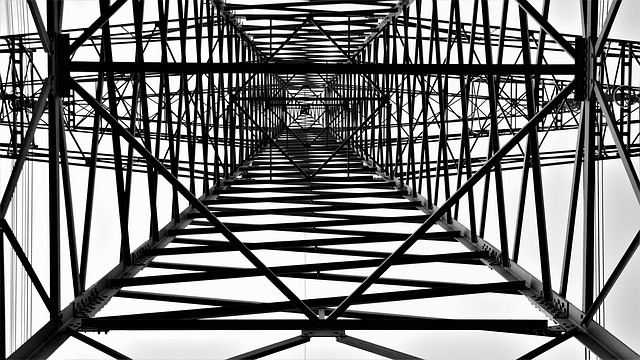
Steel Structural Fabrication at late 19th century stands out as a remarkable turning point in the construction industry as it was the first time that the world was treated to the man-made marvel of skyscrapers. This period in history also marks the advent of steel being used in structures around the world. Since that time, the engineering material known as steel has become a crucial element in commercial buildings as well as personal residences. One of the virtues of using steel to construct a building is that most of the components are prefabricated or fabricated offsite.
This helps steel-framed buildings gain a competitive advantage. Materials such as concrete, on the other hand, have to be mixed and processed at the construction site itself. The portability of steel gives it a considerable edge as the parts that are manufactured from the material is guaranteed to be of high precision and quality. Furthermore, fabricating the components in a controlled environment tends to enhance speed and improve safety.
Erection Processes
But it is not enough to merely manufacture and deliver the specified steel products. Assembling the components at the site is also pivotal to the construction process. A misstep while erecting steel structures can lead to a devastating collapse, resulting in mass casualties. The success of any project involving steel structures is defined by the efficiency of the fabrication and erection processes.
Nowadays, industrial practices dictate that the production of steel parts also take into account structural design and other engineering aspects of the project. This is precisely why the steel production chain has been modified to reflect the inclusion of architects and construction engineers as well.
In order to provide a full picture, here’s a look at the various types of steel components, the processes commonly used to fabricate them, and other aspects involved in the production and assemblage of steel parts.

Types of Steel Structural Components
Steel beams and columns
In the vast category of structural steel or steel used for construction purposes, horizontal beams and vertical columns are probably the most commonly fabricated parts. These components are crucial to the process of erecting a “skeleton” frame that will eventually go on to support the building’s floors, roofs, and walls. This technique of mass producing steel beams and arranging them in such a way so as to form a robust grid, was pioneered with the construction of the world’s first skyscrapers in the late 1800s.
Steel plates
Unlike beams and columns, steel plates can be used for a number of purposes ranging from small residences to roads and railway tracks. However, the plate specifications will also vary accordingly. The tensile strength of steel plates, as well as their resistance to abrasion and corrosion, are a few physical properties that one should keep in mind while selecting plates. But the true integrity of steel plates is derived from their chemical composition. Usually, plates made of low-carbon steel are preferred as they are easier to cut and drill holes.
Hot-rolled coils
In the construction industry, there is a frequent demand for steel that has been shaped and formed into large sizes. One type of steel component that meets this need is hot-rolled coils. Among the many advantages of steel, its high malleability is utilized to fabricate hot-rolled coils. These coils are a result of bending and rolling metal sheets via a mill at temperatures above 900 degrees Celsius. Given their malleable nature, hot-rolled coils are commonly used in the laying of railroad tracks and guardrails. They are also used to make steel frames in the automobile industry.
Cold-rolled coils
When a hot-rolled coil is processed through a cold reduction mill in order to undergo cooling and annealing, the end product is known as a cold-rolled coil. Since they undergo metallurgical processes such as annealing, cold-rolled coils provide better tolerance and surface conditions as opposed to hot-rolled coils. They also possess far more superior values of tensile and yield strengths. Furthermore, cold-rolled steel is resistant to moisture and corrosion which makes it a suitable material to be used in the construction of beams.
Poly-houses
Pre-fabricated steel does not solely feature in high-rise buildings or private residences. They are also pivotal in constructing smaller yet viable structures such as poly-houses. A poly-house is essentially a short grid of steel parts draped in a polyethylene sheet. Like greenhouses, these structures also act as controlled environments to grow and nurture plants. However, greenhouses are quickly becoming obsolete as poly-houses appear to be more economically and structurally feasible.
Fabrication Procedures and Erection Techniques
Cutting and machining
The transformation of steel into structural steel usually takes place by subjecting the material to a sequence of activities using sophisticated tools. After cleaning and preparing the milled steel, the steel is cut to specified lengths by using cold saws, band saws, hydraulic shears, or water jets. However, scientific advancements also make it possible to execute the cutting procedure by using thermo-chemical processes like flame cutting or arc plasma cutting.
Punching and drilling
Holes are a typical requirement while fabricating structural steel as they help connect the various components during the assembly stage. Drilling holes into machined steel is conventionally carried out using a radial drill. But the advent of computerized numerically controlled (CNC) tools has made it possible to drill holes by simply feeding the required data into a processing system. This technology not only produces accurately-sized holes but also substantially picks up the pace of the drilling process. Manually-drilled holes are usually small in size so as not to increase the effects of strain hardening. They are reamed into the desired sizes later.
Bending and rolling
Bending and rolling structural steel is pivotal to transport the material and ensure that it reaches the destination without suffering distortion or any other damages. By using equipment such as rollers or gag presses, steel beams can be straightened out or bent at the desired angles. Misalignments in structural components can also be solved with heat. By heating and cooling a small area of steel, the member is shortened and pulled back into alignment. This process, referred to as spot heating, is also used to curve the steel accordingly. The cold-working process to bend and roll steel parts is facilitated by dies of varying sizes.
Welding
It is truly remarkable that the simple act of fusing two pieces of metal together has had such a significant impact on industrial growth. Nevertheless, this process is indispensable to the fastening and erection of steel components in order to construct a singular steel structure. The various forms of welding such as manual arc welding or submerged arc welding largely depend on the material being welded. Ideally, one would opt for a procedure that produces minimum residual stress while providing maximum weld strength.
MWEPs
The erection of steel structures using pre-fabricated components involves various complex operations such as material handling and member assembly. Out of all the available machinery, one of them that frequently seen on construction sites is a Mobile Elevating Work Platform or MEWP. With the help of cranes, these platforms are able to erect lighter steel elements by bolting the pieces together. Although MEWPs can be used on the ground and on the partially-erected structure, one should be cautious and factor in loading strains before commencing such operations.
Bracings
Another type of apparatus used to setup tall steel frameworks is bracings. Over the entire course of the erection period, the structure must be securely bolted down in order to lift the other components to the top. Additionally, there is also a risk of the building moving when it is subjected to lateral forces and strong winds. In order to prevent this and ensure that the structure is resistant to such forces, bracings of varying shapes are affixed to the steel framework that has been completed so far.

..
Let the experts handle it for you
Rome wasn’t built in a day and neither was the jaw-dropping skyscrapers of the world that appear to soar above the clouds. The fact is that fabricating and erecting steel structures are not only time-consuming processes but also demand immense skills and in-depth technical knowledge. That’s why it might be best to let industry experts like SRJ Piping India take it from here.
Coupled with a diverse team of dedicated workers and expert engineers, SRJ Piping has “constructed” a reputation which supersedes that of any other contractor in the region. By deploying our most sharp-minded team of engineers and adept ironworkers to work on your structural steel project, SRJ promises to be with you through every step of the way.
Our team is always on stand-by to draft a quote based on your application. Still on the fence about getting us to design and fabricate your dream project? Then simply drop by for a no-obligation consultation! Our head office is located at HM Geneva House, #302, 3rd floor, Cunningham road, Bangalore-560051
Better yet, reach out to us at +918-0416-63637 or [email protected] and we’ll get back to you within a day’s time.
